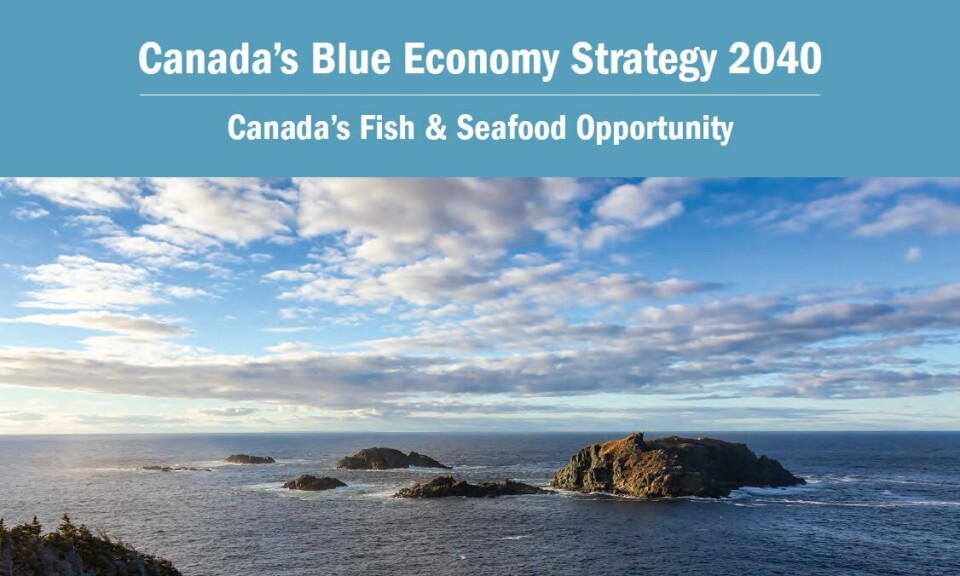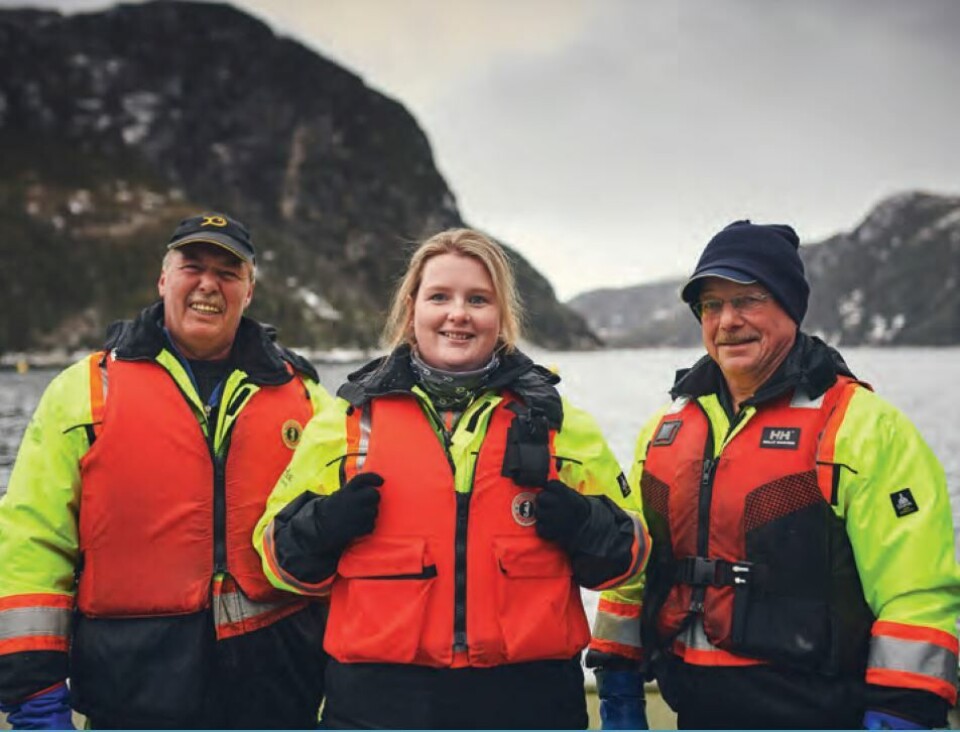
Canadian seafood industry's blueprint for a blue economy
Canada’s aquaculture and fishing industries have developed a 20-year blueprint to make the country one the world’s best sustainable fish and seafood producers.
The plan, named Canada’s Blue Economy Strategy 2040, has been drawn up by the Fisheries Council of Canada (FCC) and the Canadian Aquaculture Industry Alliance (CAIA) in response to the federal government’s pledge to develop its own Blue Economy Strategy.
“Recognising the opportunity in the Blue Economy Strategy to continue to lift Canada to even greater heights and support economic recovery from the current Covid pandemic, the associations have developed this proposal to generate sustainable development through the fish and seafood industry,” said the CAIA and FCC.
Doubling value
The organisations have recommended that the government sets a target of doubling the value of Canadian seafood, doubling the economic benefits of the industries and doubling domestic consumption of fish and seafood.
To achieve this, FCC and CAIA have included six required actions:
- Identify a federal department to drive sector economic development
- Develop a specific organisation with a mandate to grow the seafood sectors, such as Ireland’s Seafood Development Agency
- Develop five-year action plans for the seafood sector
- By 2025, through marine-based planning, ensure seafood development areas are finalised
- Expedite development of the Aquaculture Act
- Completion of the new regulations under the Fisheries Act

From No.1 to No.8
In their strategy document, the CAIA and FCC point out that Canada has steadily fallen in global rankings for production volume and exports.
“For example, only 25 years ago, Canada was the top fish and seafood exporter. We are now eighth in the world,” the authors state.
“Another example is that while Norway produces close to four times the seafood value of Canada, Canada has almost four times as much viable marine capacity (not including the Arctic and inland waters) and significant additional freshwater assets.
“There are many reasons for this decline, but we would capture it essentially in this way: other nations, including the UK, Australia, New Zealand and Norway have all developed multi-year plans to sustainably develop their seafood opportunity, grow jobs and develop their leadership. These integrated plans and actions have resulted in positive change and realisation of greater value.”
The authors continue: “This Blue Economy Strategy is this opportunity for Canada, and it needs to be embraced by all political parties and communities who want to realise a renaissance of coastal communities and an innovative, sustainable food future.
“Canada cannot and should not compete on a volume basis. It is very unlikely we will ever again be the top seafood exporter in the world. However, with the talent and innovative capacity of Canadians, we seek to capture our innovative potential to produce the best and highest quality seafood in the world, measured by sustainable production and customer satisfaction.
“‘Best Sustainable Seafood’ implies smart growth. Every plan must have an end point, and growth targets are both implied but also critical to understand where we want to go and measure against them. Specific targets for growth of major products (e.g. lobster, salmon, trout) should be identified to achieve real action.”
No layoffs in salmon sector
The document also highlights the strength of the salmon farming sector, and its importance in maintaining jobs during the Covid era.
“To date, major salmon production, which constitutes close to 90% of the value of Canada’s seafood farming sector, has seen no layoffs due to the Covid crisis. This is an important sign of strength and resiliency upon which Canada’s coastal communities can build and grow.
“Our sector is poised to be an important part of economic recovery in the coastal, indigenous and rural communities that depend on us.”
Seafood technologies
One of the issues blocking sustainable growth is Canada’s dependence on other nations for seafood technologies, say the CAIA and FCC.
“Because Canada has not identified seafood as a major opportunity nor developed integrated plans, other nations (e.g. Norway and Iceland) have advanced to be leaders in the manufacture of seafood-related industrial equipment and technology. While there are numerous excellent Canadian-sourced technologies, these are few. Canada needs to continue to facilitate the development of Canadian seafood technology that can be exported to the world.”
The authors also point to a lack of competitive access to animal health products in seafood farming.
Fish health products
“Canada’s food system is well-respected around the world for its safety and integrity. However, our commercial seafood farming sector is still young (~40 years) and the Canadian system has not provided sufficient support for competitive access to fish health products that we see in other nations,” they say.
“Partly this is the result of lack of integration in the federal system for this sector (multiple agencies of oversight including DFO, AAFC, CFIA, Transport Canada, ECCC, Health Canada etc), with no driver for integration and economic development.
“We hope that with the other key recommendations that this can be addressed and changed. Competitive access to fish health products in a modern farming sector is critical to ensure the sustainable expansion of the industry.”

Seize the podium
The authors conclude that although Canada has a proud seafood industry, the country has “faltered and lost focus and confidence”.
“We believe that the new path outlined in this proposal can help enable the industry towards innovation and development and support Canadian entrepreneurs to ‘seize the podium’ to produce the best, most sustainable seafood in the world.
“Doing so will benefit coastal and indigenous families and communities, our nation and human and planetary health. It’s a vision worth realizing without further delay.”
“Canada needs to regain pride in its seafood sector, and in doing so stimulate coastal community development and job creation, sustainable food production, and Indigenous reconciliation,” said Tim Kennedy, president chief executive of the CAIA.
“Our country needs improved economic opportunities as we begin to build back better from COVID-19, and we believe our industry can lead the way with a blue recovery.”























































